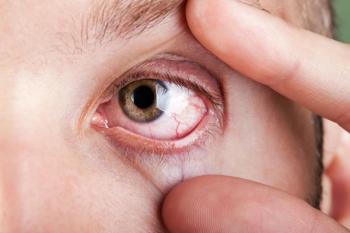
New risk factors provide challenges day and night
A growing body of evidence points to diurnal fluctuations in intraocular pressure and nocturnal low ocular perfusion pressure as risk factors in the development and progression of glaucoma.
"Our understanding of both diurnal and nocturnal IOP has been expanded by recent studies," said Dr. Chaglasian.
He cited a number of studies including several population-based clinical trials in both North America and Europe during his talk.
Unfortunately, there is no instrument or clinical device to provide optometrists with 24-hour IOP information, but clinical studies have demonstrated that IOP is higher at night in almost all patients-those with normal eyes as well as those with glaucoma-and Dr. Chaglasian said that must be considered as a mechanism of progression.
"As far as management of these risk factors, I suggest monitoring patients' blood pressure often, and being aware of 24-hour fluctuations and diurnal pressure changes as a possible underlying etiology in glaucoma suspects and glaucoma patients who are getting worse despite presenting with controlled pressure in the office," he said.
To control nighttime IOP, Dr. Chaglasian said it's important to remember that medical therapies that have similar diurnal efficacy may have different nocturnal efficacy. He suggested prescribing prostaglandin analogs and carbonic anhydrase inhibitors.
"Prostaglandin analogs are well recognized as being superior to other classes for lowering and flattening the diurnal IOP curve," he said. "There's also some suggestion that carbonic anhydrase inhibitors control IOP well at night. Either agent is preferable to beta blockers, which don't provide nocturnal coverage for IOP reduction."
Remember OPP
Compounding the difficulty of controlling nocturnal IOP is mounting evidence from multiple types of studies that suggest low OPP is an important risk factor for the development of glaucoma and glaucoma progression, Dr. Chaglasian said.
OPP is the differential between arterial blood pressure and IOP. Studies have shown that using the simple formula of subtracting the patient's IOP from his or her diastolic blood pressure can help identify patients at risk.
"If this diastolic [OPP] drops below 50, studies show that there's a significant increase in risk of the patient developing glaucoma, or having a greater risk of progression of the disease," Dr. Chaglasian said.
He added that a number of large studies provide strong evidence among different populations for the relationship between vascular deficits and the prevalence, incidence, and progression of glaucoma.
"Low blood pressure at night, coupled with high IOP when the patient is in a supine position, compromise OPP and place the optic nerve head at risk for damage," he said. "It makes sense to use systemic blood pressure medications in the morning to minimize the risk of nocturnal hypotension, to use IOP lowering drugs to reduce IOP while sleeping, and to avoid IOP meds that lower systemic blood pressure at night, such as beta blockers and alpha agonists."
Newsletter
Want more insights like this? Subscribe to Optometry Times and get clinical pearls and practice tips delivered straight to your inbox.













































